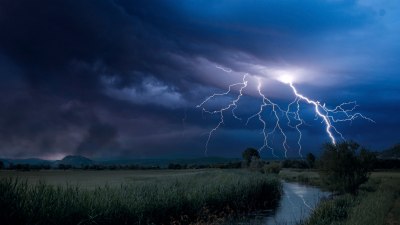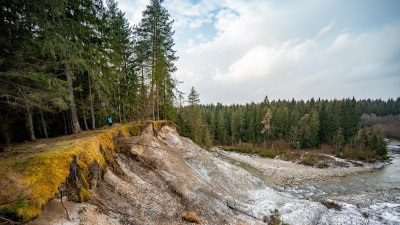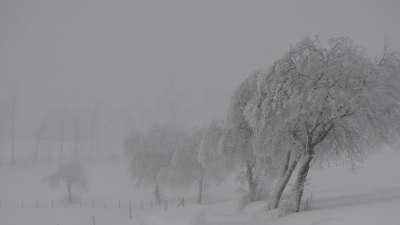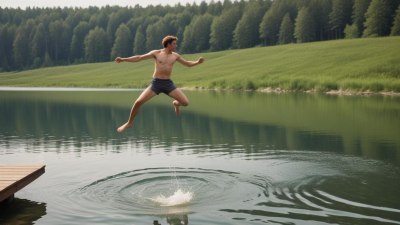How to Pretend You’re Enjoying a Historical Site While Slowly Overheating
Master the art of feigning enjoyment at historical sites even in the heat while keeping cool.

This image was created with the assistance of Freepik
Exploring historical sites can be a fascinating experience, rich with culture and knowledge. However, the outdoor elements can often pose a challenge, especially during hot weather. Whether you’re feeling the sun’s relentless rays or the oppressive humidity, it’s essential to maintain a façade of enjoyment while managing your discomfort. Here’s how to navigate the heat and still appreciate the historical wonders around you.
1. Knowing Your Surroundings
Before even setting foot at the historical site, familiarize yourself with the layout and key attractions. Understanding what you’re about to encounter can help you prioritize your time in certain areas. Make a plan based on shaded locations, rest spots, and nearby amenities. Use maps or mobile applications to identify these features so you’re not aimlessly wandering in the heat.
2. Dress Appropriately
Choosing the right outfit can significantly influence your comfort level. Lightweight, breathable fabrics are essential for staying cool. Opt for light-colored clothing to reflect rather than absorb the sun’s rays. A wide-brimmed hat can also provide additional shade, while sunglasses protect your eyes. If you’re prepared for the heat, it’s easier to maintain an appearance of enjoyment.
3. Stay Hydrated
Hydration is key when exploring a historical site under the sun. Carry a reusable water bottle and fill it up at available drinking fountains or stores throughout the site. Sipping water regularly can help combat overheating. You can even take strategic breaks to sit down in shaded areas and sip your water while looking engaged in the attraction.
4. Use Strategic Breaks
When feeling overwhelmed by heat, don’t hesitate to take breaks. Find cool areas to rest, such as museums, visitor centers, or shaded nooks. During these moments, you can refresh yourself while still appearing to be immersing in the history surrounding you. Use this downtime to take notes or plan your next move so it feels intentional rather than a concession to discomfort.
5. Engage in Conversations
Actively engage with your companions or fellow tourists. This not only distracts from your discomfort but also creates the illusion of deep engagement in the historical context of your surroundings. Ask questions about the site, share interesting facts you’ve learned, or exchange thoughts about what you’re seeing. The more involved you are socially, the less you’ll focus on the physical discomfort.
6. Take Photos
Documenting your visit can serve as a great distraction from overheating. Use your camera or smartphone to capture the essence of the site. Take aesthetically pleasing photos and pose in front of landmarks, all while subtly moving to cooler spots. The act of taking pictures not only keeps you engaged but also allows you to look enthusiastic in your social circles.
7. Plan for Cooler Times
If possible, visit historical sites during cooler parts of the day, such as early morning or late afternoon. This can help you avoid the peak heat of midday, allowing for a more enjoyable experience. If evening activities are available, consider saving significant exploration for when temperatures drop. This approach enables you to appreciate the site in pleasant weather while maintaining the appearance of an avid history enthusiast.
8. Know Your Limits
Understanding your personal limits is crucial when exploring under the sun. If you begin to feel too overheated, don’t be afraid to cut your visit short or relax in designated cool areas. Signs of heat exhaustion should not be ignored. It’s better to prioritize your health than to force yourself to endure an uncomfortable experience for the sake of appearances. You can always plan a return trip when conditions are more favorable.
9. Use Fans and Cooling Aids
Bring along portable fans or cooling towels that can be implemented both for comfort and dramatic effect. A fan can be a lifesaver when feeling overheated. You can use it discreetly while walking, or when stopping to engage with the scenery. Cooling towels can be wrapped around your neck for relief, giving the impression that you’re well-prepared for your historical adventure.
10. Enjoy Refreshing Snacks
Many historical sites feature snack stalls or nearby cafes. Treat yourself to cold refreshments such as ice cream, frozen yogurt, or iced beverages. Not only will you cool down, but savoring local snacks can also enhance your overall experience. Documenting these culinary encounters adds an enriched layer to your faux engagement with the site.
11. Participate in Guided Tours
Joining guided tours can alleviate some of the discomfort associated with self-navigation and limited breaks. Engaging with a knowledgeable guide can deepen your understanding of the site while providing opportunities to rest in cooler conditions. Listen intently to the stories, taking mental notes for future discussions and elevating your experience beyond the mere aesthetic of the location.
12. Mind Your Breath
Minding your breath can serve two purposes: help you keep your cool and maintain an appearance of composed enjoyment. Practice breathing techniques that allow calm and steady breathing. This can reduce the physical sensation of overheating while making you appear relaxed and engaged with your surroundings. Challenge yourself to speak elaborately about what you’re witnessing, relying on your collected thoughts rather than succumbing to discomfort.
13. Connect with History
Ensure that you’re also making genuine efforts to appreciate the historical significance of the site. Even while pretending to enjoy, delve into the stories, artifacts, and structures that compose the site. You can engage in discussing the relevance of specific elements with others, sharing what you’ve learned, or observing what captivates fellow visitors. This creates an authentic engagement, allowing you to balance comfort with genuine exploration.
14. Share Your Experience
After your visit, take time to reflect on your experiences. Share your thoughts on social media, outlining both the sights you enjoyed and your humorous struggles with the heat. Doing so allows you to connect with others who’ve had similar experiences, gaining a community of individuals who sympathize with the challenge of appreciating historical sites under such conditions.
15. Revisit for the Full Experience
Finally, don’t be discouraged if your initial visit was marred by the heat. Plan a return trip when the conditions are more favorable. A second visit allows you to delve deeper into the site’s history when you can focus all your energy on the experience without the hindrance of discomfort. Light-heartedly discuss your previous hurdles during this new visit and prepare to engage fully with the history that so captivates others.
In conclusion, pretending to enjoy a historical site while feeling overheated can be seamlessly accomplished with a few strategic approaches. Prepare ahead of time, engage actively, and find clever ways to manage the heat, all while feigning deep appreciation of the history that surrounds you. With these tips, you’ll be able to savor the moments without sacrificing your comfort.











